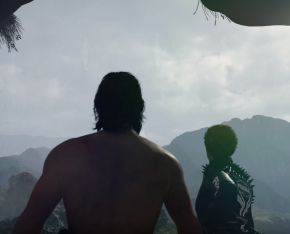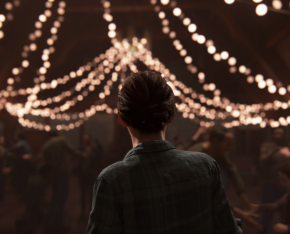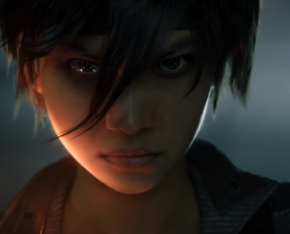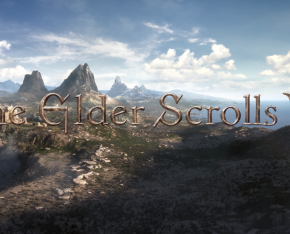By Brad Sewell on August 22, 2013 at 8:00am
After several years of a friend’s insistence, I decided to take a look at "Disgaea: Hour of Darkness." "Disgaea" games are still being developed by Nippon Ichi Software to this day. This week marks the 10th anniversary of "Disgaea’s" North American release.
If you’re looking for a game with extensive amounts of gameplay, this is definitely the choice for you. I expected to finish the game in around 35 hours after hearing it was a long one, but I was way off. I completed the first playthrough at 62 hours. Alternate endings are mentioned in the game’s final chapter as well.
The story follows the journey of Laharl, a young demon who wakes from a long slumber and sets out to assume his claim to Overlord of the Netherworld after his father’s passing some years prior. The earliest of the story’s 14 chapters focus on Laharl’s rise to power, and later ones show him as he learns what it means to rule. Early on, you’ll have the assistance of fellow demon Etna, who helps Laharl find the strength to topple other claimants to the throne. However, this restructuring of the underworld attracts the notice of Celestia (it’s okay to call it Heaven), who sends the adorable angelic assassin Flonne to take care of things. I won’t spoil the story for you, but I can say that there are human souls in peg-legged penguin suits awaiting rebirth, jealousy among both angels and demons, and at least one spaceship battle. I promise. Also a robot.
In a style familiar to many JRPGs, cutscenes are not animated. Instead, they are played out with a series of manga cutouts in various poses with some voice acting that was pretty great for the 128-bit era, including work from Paula Tiso, who you may remember as Lulu from “Final Fantasy X.” The story itself holds a memorable cast and keeps a lighthearted tone that becomes outright hilarious at times.
Combat plays out as a tactical RPG akin to “Final Fantasy Tactics” and “Front Mission.” Characters move across squares, constrained by horizontal and vertical limits imposed on them by their class and gear. Each turn lets you move within your range and take one action, whether it’s attacking, casting a spell, or throwing another unit or object. Throwing friendly units across the map is quite handy when you come to a battle requiring a blitz across the board. Weapon selection is standard fare: spears can attack at range a bit, hammers and axes hit hard but tend to miss, swords are effective all around, and ranged attackers sacrifice defense.
Customization is key in this game. Any item you find will have certain stats on it, even if it’s not on gear. This means you might find a potion (usually named after a dessert of some sort) with, say, 12 defense on it. It doesn’t make much sense until you look into the Item World, a place where you can go into items to fight a series of battles to power the item up. Along the way through those battles, you’ll find certain enemies called Residents that will surrender to you if you defeat them. These Residents are the reason that items have strange stats at times. The point to customization is that once you defeat a stat-bearing Resident, you can move them to a different item. Defeating a Resident doubles its effectiveness, so if you fight the 12-defense Resident (called Sentries in this example), it powers up to 24 defense, and you can then move it from your health potion to something more worthwhile, such as a shield or suit of armor. Each stat has a Resident type you can conquer and move around, as do various status attacks and elemental resistances.
I wish I could say it’s simpler than that.
“Disgaea” also employs a mentor/pupil system. This means that if you use Laharl to create a Cleric, Laharl can then stand beside the Cleric as its mentor and cast Cleric spells. Once he casts the spell enough times, he’ll learn it on his own, but he’ll have to learn it from a pupil initially. Maybe a little backwards, but it works. Classes power up over time as well: Archers become Snipers, which can become Strikers, and so on through a few other tiers. You can create new characters to fill these roles, but it’s often worth it to Reincarnate them, causing them to revert to level one but allowing them to retain some of their abilities and weapon proficiencies. There are others tiers within tiers, meaning that a Genius Striker will perform much better than a Good-for-Nothing Striker, but this also requires a reset to level one.
In true imperial fashion, Laharl must often make requests of the Dark Assembly, a demonic senate that will vote on such issues as letting shops sell more expensive goods, raising or lowering the difficulty of enemies, or even granting a character the ability to move further or perform more counterattacks in a turn. Higher level demons have more influence in the assembly than the lower ones, but you can always butter them up with a few bribes along the way. I never would have thought demons would like candy that much, but that’s been my saving grace in several close votes.
Anything bad to say about the game? It’s grindy. I mean, I know that’s the JRPG way, but, man, it is grindy. It took a few hours to recover from Reincarnating Laharl. Dropping from level 54 to level one again stripped a chunk out of my soul, but I knew it was something best handled early on. Battles may feel repetitive after a while, but there is always a sense of gain and accomplishment through it all.
If you’re into tactical RPGs, I definitely recommend “Disgaea: Hour of Darkness.” It looks like current prices for physical PS2 copies are running in the $20 range, but you can grab a digital copy from PlayStation Network for $4.99. Although there are currently four console games in the “Disgaea” series, “Hour of Darkness” will have a direct sequel, “Disgaea Dimension 2,” slated to release in Europe on Sept. 27 and North America on Oct. 8.









